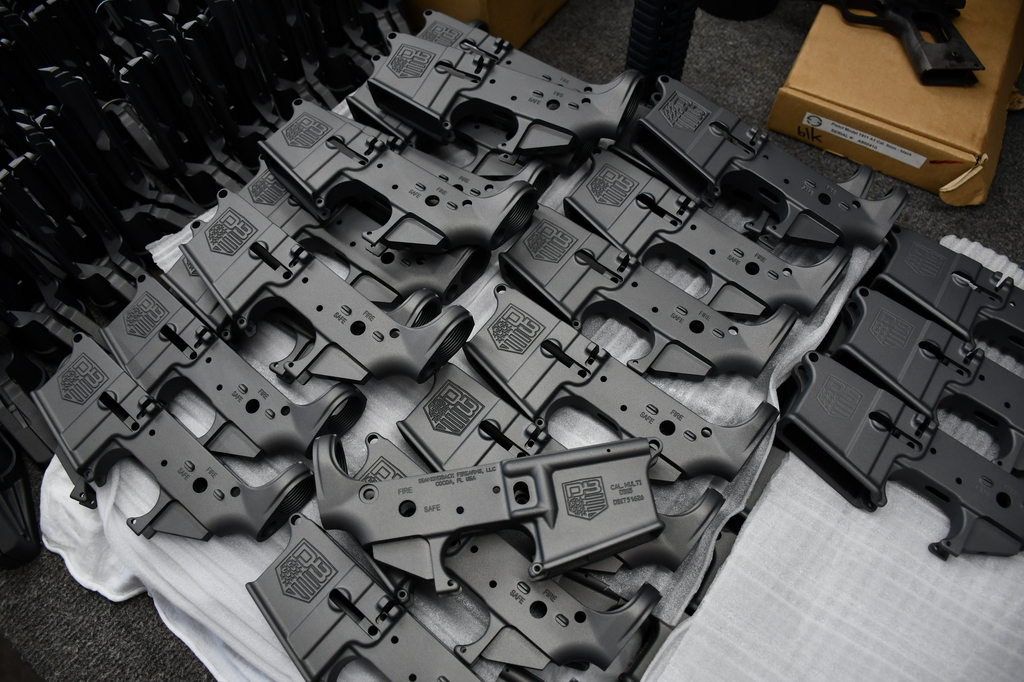Gun Coating Options: Cerakote and More Services by Spectrum Coating
There are many gun coating options for today’s firearm owner, ranging from the more traditional bluing of steel, to the multi-colored and toughness of Cerakote as well as the cutting-edge films used in Hydrographic printing. Each has unique benefits and properties, so what you choose for your firearm may depend on several determinants: There are many coating options for today’s gun owner, ranging from the more traditional bluing of steel, to the multi-colored and toughness of Cerakote as well as the cutting-edge films used in Hydrographic printing. Each has unique benefits and properties, so what you choose for your firearm may depend on several determinants:
â— The amount you want to spend
â— The quality of the piece
â— How you intend to use your gun
â— Your commitment to maintenance
To boost your knowledge about the many types of gun coating services, the team at Spectrum Enterprises, Inc. has put together a guide. Hopefully, you can use it to compare and contrast the different options as far as the different process, cost, protection, durability, and longevity.
Bluing
Also called: Gun bluing, cold bluing, hot bluing, rust bluing, fume bluing, oxidizing and black passivating
Process: Zinc or manganese, with the addition of copper and chlorates, causes a reaction converting rust-tendency to magnetite.
Durability: ★★
Temperature: No benefits
Curing: Overnight
Cost: $$
Colors: Gray blue to a very dark gray
Benefits:
â— Rust control to protect steel from corrosion
â— Does not add thickness
â— Increases resistance to superficial scratching
Limitations:
â— Not moisture proof
â— Requires frequent oiling
â— Periodically requires rebluing
Phosphating
Also called: Parkerizing
Process: Zinc or magnesium phosphate with the addition of copper and chlorates in a chemical bath where the iron in steel is converted to magnetite or black oxide
Durability: ★★★★
Temperature: No benefits
Curing: A few hours
Cost: $$$$
Colors: From a medium gray to black finish
Benefits:
â— Non-reflective
â— A foundation for subsequent types of coating treatments
â— Resistant to superficial scratching
Limitations:
â— Requires oil to enhance lubricity
â— Cannot be used on aluminum, brass, or copper
â— Often viewed as an inferior finish to bluing
â— Concerns about environmental friendliness
Anodizing
Also called: Bengough-Stuart, MIL-A-8625 standard
Process: Uses sulfuric acid as an anodizing electrolyte
Durability: ★★★★
Temperature: Heat-resistant to 1,221° Fahrenheit; thermal stress may cause cracks above 80 ° Fahrenheit
Curing: A few hours
Cost: $$$$
Colors: Pale yellow, gold, deep bronze, brown, grey, and black
Benefits:
â— Increased lubricity
â— Improves adhesion for paint primers, glues, etc.
â— Porousness accepts color well
â— Moderate wear resistance
Limitations:
â— Oxide layer increases piece dimensions
â— Production time affected by alloy and thickness desired
Cerakote Elite Series
Also called: E Series
Process: An advanced ceramic resin which is sprayed on and oven cured or air dried
Durability: ★★★★★
Temperature: To 500° Fahrenheit
Curing: 24 hours
Cost: $$$
Colors: 10 from earth-tone to smoke and black
Benefits:
â— Extremely resistant to scratches and wear
â— Can be applied to anything that will survive a trip in the curing oven, even plastic up to 180° Fahrenheit
â— Superior lubricity offers low maintenance and suitable for internal parts
â— Resists saltwater corrosion
â— Meets government contract specifications
â— Volatile organic compound (VOC) exempt in all 50 states
â— Professional applicators are certified
Limitations:
â— Requires prep knowledge
â— Typically, an after-market coating
â— When cured, cannot apply extra
Cerakote H Series
Also called: H Series
Process: An advanced ceramic resin technology which is sprayed onto metals, polymers, wood, glass, fiberglass and carbon fiber composites
Durability: ★★★★★
Temperature: Provides resistance up to 1800° Fahrenheit on certain materials
Curing: Tack free in 40 minutes. Air dry in 24 hours. Fully cured in 5 days.
Cost: $$$
Colors: Almost any. Custom including gold, silver, bronze, and aluminum
Benefits:
â— The toughest layer of protection using color
â— Thin enough to tighten tolerances on moving parts
â— Application for most materials
â— Extremely high chemical resistance
â— Volatile organic compound (VOC) exempt in all 50 states
â— Professional applicators are certified
Limitations:
â— Fit and finish on internal pieces requires extra know-how
â— Improper prep impacts durability
Nickel Boron
Also called: Electroless nickel plating
Process: Sodium or alkylamine borane, as well as a source of nickel ions and control chemical to introduce nitrogen and carbon into steel or iron-containing alloy
Durability: ★★★★
Temperature: Melting point of 1976° Fahrenheit
Curing: A few hours
Cost: $$$$$
Colors: Silvery metallic
Benefits:
â— Increased lubricity
â— Easy to clean
â— Extremely corrosion resistant
â— Good for tight tolerances
Limitations:
â— When buffed increases glare
â— Requires a small amount of lubrication
â— Over time gives way pressure on hard-use components
â— May discolored under high heat
Teflon
Also called: One Coat, Dry Lubricant, Tefzel, Teflon FEP and PFA
Process: A thermoplastic coating which is available in six different types
Durability: ★★★★
Temperature: -450.67° to 620° Fahrenheit
Curing: Dry once oven cooled
Cost: $$$$
Colors: Gray, black, green, blue, red, brown, and no pigment
Benefits:
â— Non-stick self-lubricating properties
â— Resists water
â— Exceptional resistance to temperature, corrosion, and stress-induced cracking
â— Normally unaffected by chemicals
Limitations:
â— Multiple formulas on the market mean you don’t always know what you are getting
â— If the spray is too close, the finish ripples.
â— If too far away, the spray is dry and rough.
Hydrofilm
Also called: Hydrographics, water transfer printing, fluid imaging, cubic printing, camo dipping
Process: Item is dipped into a water solution with a film on the surface; once dry, a clear coat is applied.
Durability: ★★★★
Temperature: Up to 325° Fahrenheit
Curing: Touch in 20 minutes; handle in one hour
Cost: $$$$
Colors: Thousands of design and color options
Benefits:
â— Cutting-edge appearance, colors, designs
â— Works on contoured surfaces including plastic, fiberglass, wood, ceramic, metal
â— High standard of durability and quality
â— Superior UV protection
â— Options of high gloss, medium gloss, and flat
Limitations:
â— Requires submersion in water
â— Wear depends on quality the of film, ink, and coating
â— Some items are awkward to dip
That is a lot of information! But it also means you have a lot of options! At Spectrum, we look forward to guiding your decision, discussing your demands, any potential wear and tear, and your commitment to maintenance.
Call us or visit our shop in Cocoa. Get your hands on our work and get your firearm “Spectrumized."
Note: Estimated Scale Ranking
*Durability of coating type is ranked from 1 to 5 stars with ★ being least durable and ★★★★★ being the most durable.
**Cost is ranked from 1 to 5 $ with $ being lowest price and $$$$$ being higher priced. Actual pricing may vary in different areas of the country, the individual part(s) coated, complexity of assembly and quantity of order.


